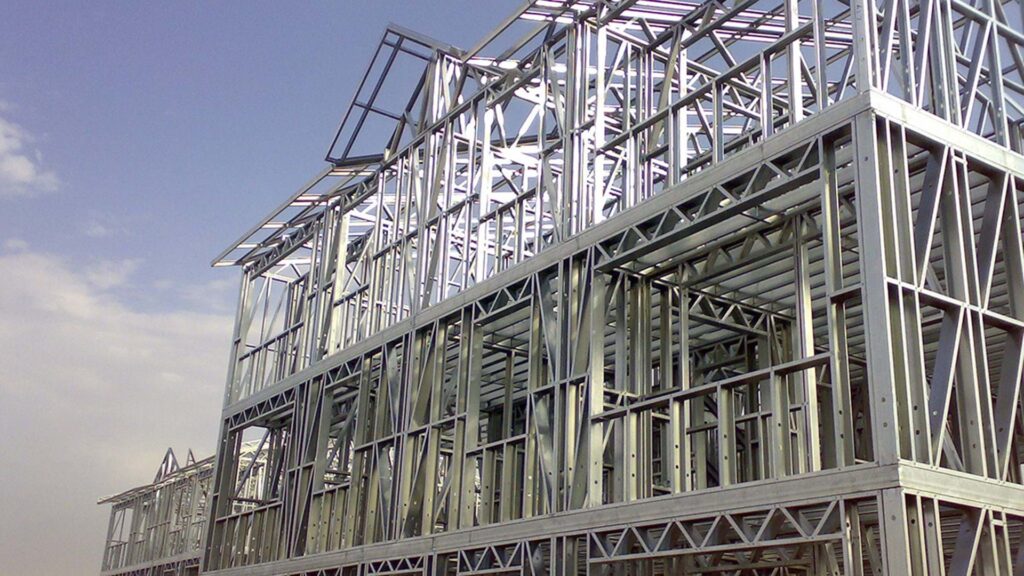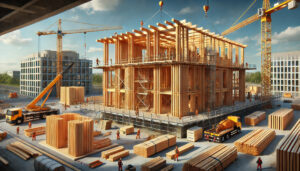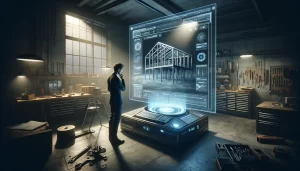Cost Analysis: Steel Frame vs. Wood Frame Construction in Modern Building Projects Introduction
In the construction industry, selecting the right framing material is critical to the project’s overall success, impacting not only the initial construction costs but also long-term sustainability, durability, and operational expenses. The debate between using steel frame versus wood frame construction is a multifaceted issue that encompasses not only financial considerations but also environmental impact, building performance, and future adaptability. This article aims to dissect these aspects in detail, offering a comprehensive cost analysis that assists stakeholders in making informed decisions for their modern building projects.
Segment 1: Comprehensive Cost Analysis
Initial Construction Costs
Steel Frame Construction: Initially, steel frame construction may appear more expensive due to higher material costs and the need for specialized labor. However, the precision of steel framing, facilitated by modern manufacturing techniques, can lead to reduced waste and more efficient use of resources. Furthermore, the speed of assembly for steel structures often results in shorter construction timelines, potentially lowering overall project costs.
Wood Frame Construction: Traditionally, wood framing has been preferred for its cost-effectiveness, attributed to lower material costs and the availability of skilled labor. The initial cost advantage of wood can be significant, making it a popular choice for residential and small-scale commercial projects. Yet, this cost benefit is subject to fluctuations in timber prices, which can vary widely based on regional supply and demand dynamics.
Lifecycle and Operational Costs
Steel Frame: Over the long term, steel frame construction offers substantial savings due to its resilience against decay, pests, and fire. These characteristics not only reduce maintenance and repair costs but also contribute to longer building lifespans. Additionally, steel’s adaptability to future modifications can further enhance its cost-efficiency, providing options for expansion or repurposing with minimal structural alterations.
Wood Frame: The ongoing costs associated with wood framing include periodic maintenance, susceptibility to termite damage, and potential moisture-related issues, which can significantly impact the structure’s integrity over time. These factors necessitate regular inspections and maintenance, adding to the operational costs. Moreover, wood’s vulnerability to fire can lead to higher insurance premiums, further affecting the total cost of ownership.
Segment 2: Environmental Considerations and Building Performance
Sustainability and Environmental Impact
Steel Frame: Steel is highly regarded for its sustainability credentials, primarily due to its recyclability. The energy-efficient production processes and the ability to recycle steel without loss of quality make it an environmentally responsible choice. Modern steel production methods, focused on reducing carbon emissions, enhance steel’s appeal as a green building material.
Wood Frame: As a renewable resource, wood captures and stores carbon dioxide, contributing positively to the building’s carbon footprint. When sourced from sustainably managed forests, wood framing supports ecological balance and promotes biodiversity. However, the environmental benefits of wood are contingent upon responsible forestry practices and efficient manufacturing processes to minimize waste and energy consumption.
Performance in Varied Climates and Conditions
Steel Frame: Steel’s structural integrity makes it exceptionally suited for areas prone to severe weather, earthquakes, or other extreme conditions. Its non-combustible nature and resistance to warping and shrinking ensure consistent performance across a wide range of climates, enhancing the building’s resilience and safety.
Wood Frame: While wood offers natural insulation properties and a warm aesthetic, its performance can be adversely affected by humidity, temperature fluctuations, and exposure to water. In regions susceptible to moisture or termite infestation, wood structures may require additional treatments and protective measures to maintain their integrity and performance.
Case Studies and Comparative Analysis
Commercial Building Analysis: An in-depth comparison of two similar commercial projects, one constructed with steel and the other with wood, revealed that the steel-framed building incurred a higher initial investment but offered lower annual operating costs due to reduced energy consumption and maintenance expenses. Over a 20-year period, the total cost of ownership for the steel-framed building was approximately 15% less than its wood-framed counterpart.
Residential Development Scenario: A study comparing the costs of constructing similar-sized homes using steel and wood framing showed initial savings of 18% for the wood-framed homes. However, when factoring in long-term maintenance, durability, and energy efficiency, the cost benefits of steel became apparent, with a break-even point occurring within the first 10 years of occupancy.
Conclusion
The decision between steel and wood frame construction encompasses a complex array of factors, including but not limited to initial costs, lifecycle expenses, environmental impact, and structural performance. While wood may offer upfront cost savings, the long-term benefits of steel, such as durability, low maintenance, and sustainability, present a compelling case for its use in modern building projects. Ultimately, the choice should be based on a holistic analysis of each project’s specific requirements, goals, and constraints, ensuring that the selected framing material aligns with the broader objectives of sustainability, efficiency, and cost-effectiveness.
As the construction industry continues to evolve, so too will the materials and methods at its disposal. By carefully weighing the pros and cons of steel and wood frame construction, stakeholders can navigate these choices, ensuring that their projects not only meet today’s needs but are also prepared to adapt to the challenges and opportunities of tomorrow.





